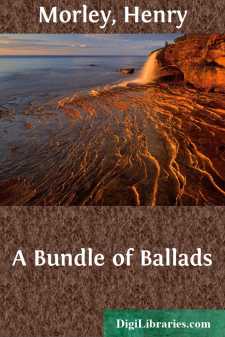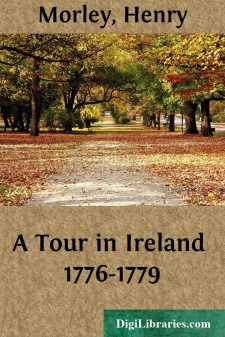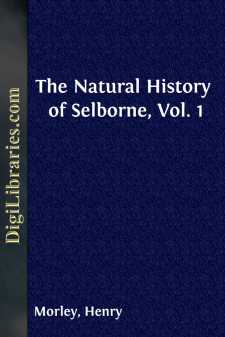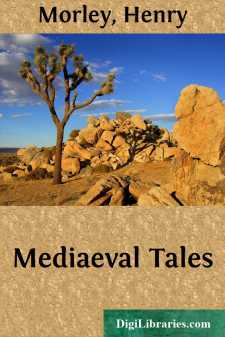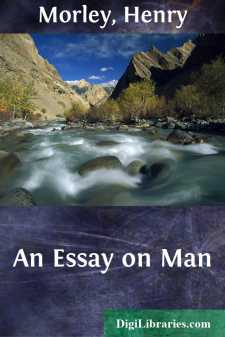Categories
- Antiques & Collectibles 13
- Architecture 36
- Art 48
- Bibles 22
- Biography & Autobiography 813
- Body, Mind & Spirit 142
- Business & Economics 28
- Children's Books 15
- Children's Fiction 12
- Computers 4
- Cooking 94
- Crafts & Hobbies 4
- Drama 346
- Education 46
- Family & Relationships 57
- Fiction 11829
- Games 19
- Gardening 17
- Health & Fitness 34
- History 1377
- House & Home 1
- Humor 147
- Juvenile Fiction 1873
- Juvenile Nonfiction 202
- Language Arts & Disciplines 88
- Law 16
- Literary Collections 686
- Literary Criticism 179
- Mathematics 13
- Medical 41
- Music 40
- Nature 179
- Non-Classifiable 1768
- Performing Arts 7
- Periodicals 1453
- Philosophy 64
- Photography 2
- Poetry 896
- Political Science 203
- Psychology 42
- Reference 154
- Religion 513
- Science 126
- Self-Help 84
- Social Science 81
- Sports & Recreation 34
- Study Aids 3
- Technology & Engineering 59
- Transportation 23
- Travel 463
- True Crime 29
The Natural History of Selborne, Vol. 2
by: Henry Morley
Description:
Excerpt
INTRODUCTION.
Gilbert White’s home in the quiet Hampshire village of Selborne is an old family house that has grown by additions, and has roofs of nature’s colouring, and creeping plants on walls that have not been driven by scarcity of ground to mount into the air. The house is larger, by a wing, now than when White lived in it. A little wooded park, that belongs to it, extends to a steep hill, “The Hanger,” clothed with a hanging wood of beech. The Hanger and the slope of Nore Hill place the village in a pleasant shelter. A visit to Selborne can be made by a walk of a few miles from Alton on the South Western Railway. It is a country walk worth taking on its own account.
The name, perhaps, implies that the place is wholesome. It was a village in Anglo-Saxon times. Its borne or burn is a brook that has its spring at the head of the village, and “sæl” meant prosperity or health of the best. It is the “sel” in the German “Selig” and the “sil” in our “silly,” which once represented in the best sense well-being of the innocent. So our old poets talk of “seely sheep;” but as the guileless are apt prey to the guileful, silliness came to mean what “blessed innocence” itself now stands for in the language of men who, poor fellows, are very much more foolish. So Selborne has a happy old pastoral name. The fresh, full spring, called the “Well Head,” which gives its name to Selborne, doubtless brought the village to its side by the constant water supply that it furnished. The rivulet becomes at Oakhanger a considerable stream.
The Plestor, mentioned in the second letter as having once had a great oak in it which was blown down in the great storm of 1703—a storm of which Defoe collected the chief records into a book—bears witness also to the cheerful village life of old. The name is a corruption of Play-stow; it was the playground for the village children. That oak blown down in 1703, which the vicar of the time vainly endeavoured to root again, was said to have lived 432 years before the time of its overthrow. The old yew in the churchyard has escaped all storms.
Gilbert White wrote three or four pieces of verse. Of one of them, “An Invitation to Selborne,” these are the closing lines:—
“Nor be that Parsonage by the Muse forgot;
The partial bard admires his native spot;
Smit with its beauties, loved, as yet a child,
(Unconscious why) its scapes grotesque and wild.
High on a mound th’ exalted garden stands,
Beneath, deep valleys, scooped by Nature’s hand.
A Cobham here, exulting in his art,
Might blend the General’s with the Gardener’s part;
Might fortify with all the martial trade
Of rampart, bastion, fosse, and palisade;
Might plant the mortar with wide threatening bore,
Or bid the mimic cannon seem to roar.
Now climb the steep, drop now your eye below,
Where round the blooming village orchards grow;
There, like a picture, lies my lowly seat,
A rural, sheltered, unobserved retreat.
Me, far above the rest, Selbornian scenes,
The pendent forests, and the mountain greens,
Strike with delight; there spreads the distant view,
That gradual fades till sunk in misty blue;
Here Nature hangs her slopy woods to sight,
Rills purl between, and dart a quivering light.”
H. M.
LETTER XV.
Selborne, July 8th, 1773.
Dear Sir,—Some young men went down lately to a pond on the verge of Wolmer Forest to hunt flappers, or young wild-ducks, many of which they caught, and, among the rest, some very minute yet well-fledged wild-fowls alive, which upon examination I found to be teals. I did not know till then that teals ever bred in the south of England, and was much pleased with the discovery: this I look upon as a great stroke in natural history.
We have had, ever since I can remember, a pair of white owls that constantly breed under the eaves of this church. As I have paid good attention to the manner of life of these birds during their season of breeding, which lasts the summer through, the following remarks may not perhaps be unacceptable:—About an hour before sunset (for then the mice begin to run) they sally forth in quest of prey, and hunt all round the hedges of meadows and small enclosures for them, which seem to be their only food. In this irregular country we can stand on an eminence and see them beat the fields over like a setting-dog, and often drop down in the grass or corn. I have minuted these birds with my watch for an hour together, and have found that they return to their nest, the one or the other of them, about once in five minutes; reflecting at the same time on the adroitness that every animal is possessed of as far as regards the well-being of itself and offspring. But a piece of address, which they show when they return loaded, should not, I think, be passed over in silence. As they take their prey with their claws, so they carry it in their claws to their nest; but, as the feet are necessary in their ascent under the tiles, they constantly perch first on the roof of the chancel, and shift the mouse from their claws to their bill, that their feet may be at liberty to take hold of the plate on the wall as they are rising under the eaves....




